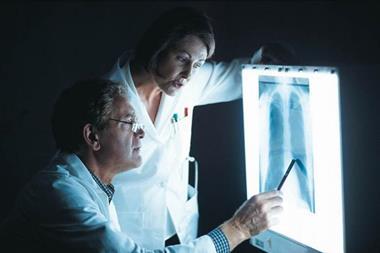Can shift work cause cancer? A growing body of evidence suggests that it may. And the first compensation has already been paid out.
As emerging risks go, this one is barely out of the egg. But it has the potential to grow into something extremely venomous, with a very long tail indeed. It has long been realised that working the graveyard shift, night after night, is not exactly good for the human body, and there is a body of learned work on the disruptions caused to the circadian rhythms and the potential effect on sleep patterns and mental health. But it was not until 1987 that Richard Stevens, a cancer epidemiologist and professor at the University of Connecticut Health Center, published a paper suggesting that there might be a connection between light at night and breast cancer. He speculated that a sudden rise in breast cancer rates in the 1930s was somehow connected to the increased prevalence of night shift work brought on by industrialisation.
At first the idea seemed far-fetched, but over the decades since 1987 there has been a gradual amassing of evidence to suggest that there is indeed an increased risk of cancer, especially of breast cancer, in being exposed to light at times when the human body is naturally surrounded by darkness. The evidence is being pursued in the laboratory, to find the mechanism by which a tumour is more likely to occur, and also through studies of the incidence of breast cancer in large groups of workers who have been exposed to shift working for many years.
But the event which should have started ringing alarm bells among risk managers and insurers was the news, which briefly appeared in the UK media around 16 March this year, that 37 Danish women with a history of long-term night shift work had received compensation after developing breast cancer. The decision by the Danish National Board of Industrial Injuries to include - even if not on a permanent basis – the effects of night shift working on breast cancer incidence as an occupational disease were based on a 2007 study of the evidence carried out at Aarhus University hospital, and on the statement by the World Health Organisation’s International Agency for Cancer Research that: ‘Shift work that involves circadian disruption is probably carcinogenic to humans’. This puts the risk at the same level as that posed by ultraviolet light or diesel exhaust fumes. Some of the studies the IARC examined put the increased risk of breast cancer for women who had worked continuous night shifts for more than 30 years as high as 36%
The Danish embassy in London carries a web page with this announcement:
Danish women with breast cancer who have worked night shift for usually 20-30 years and at least one night per week are encouraged to apply for compensation for their cancer disease. The compensation scheme is based on scientific evidence made on the request of The National Board of Industrial Injuries which has proven the connection of breast cancer with years of ongoing night-shift work. The board is awaiting a report from The International Agency for Research on Cancer (IARC) later this year to consider if the breast cancer based on night shift will be included permanently on their list of occupational diseases.
Until then, women with breast cancer who have worked night shift during a considerable period of time can apply for compensation through a provisional scheme.
Does this constitute a breach in the dam for employers’ liability throughout Europe? Not yet, is the answer. In Denmark, occupational diseases are covered by the Labour Market Occupational Diseases Fund, to which all employers must contribute. Compensation can therefore be paid on a no-fault basis. In countries, such as the UK, where a claim would have to be made against an employer, the evidence for a link between shift work and breast cancer is unlikely to be sufficiently unambiguous to succeed – for the present. Additionally, confounding factors, such as an individual’s genetic susceptibility or lifestyle issues, would have to be ruled out before a judgment based on the balance of probabilities could succeed.
However, a raft of further studies is in the pipeline, including a review of the matter by the UK’s Health and Safety Executive and a full report from the IARC. The studies will include not only breast cancer – for which the evidence is strongest – but prostate and colon cancer too. This is not a subject that is going to go away immediately. It is well worth keeping an eye on developments, for, as with asbestos, courts may well decide in future that there was a date by which employers should have been aware of the risk. Failure to take measures to protect their employees after that date may well be construed as negligent.
What should employers do in the meantime? The greatest risk would appear to be to those women who work night shifts only, and do so for long periods of time. Therefore, advised Employers Law Magazine in June:
• Minimise back-to-back night shifts as far as possible.
• Take appropriate action if health risks are identified.
• Have a formal process so that employees can raise concerns about health at work.
• Act on their concerns appropriately and promptly.
• Note any statutory obligations and ensure they are met.
• Ensure working time regulations are observed by night shift line managers and employees.
Perhaps also, knowing the way that health scare stories can arise from nowhere to dominate the tabloid media, even where scientific evidence is ambiguous or disputed, it may be as well to prepared for this one to have its 15 minutes of fame and to anticipate methods of easing employee’s concerns.



















